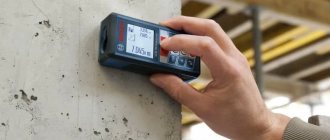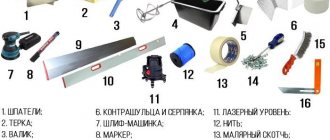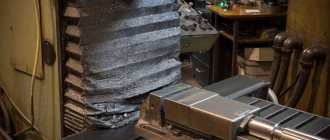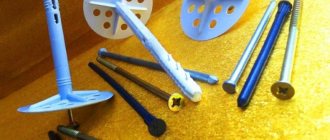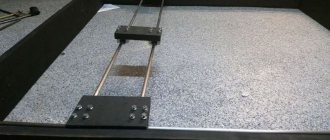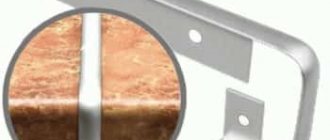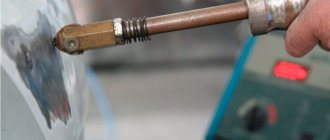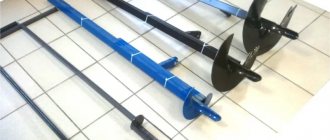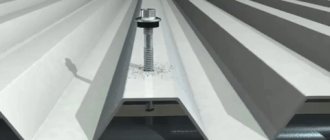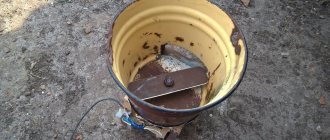Read in this publication: Laser tape measure: design and principle of operation How to choose a laser tape measure: capabilities decide everything How to choose a laser rangefinder: what to look for
Measure seven times and cut once. This is what folk wisdom says, which allows you to carry out work on manufacturing something accurately and without errors. This is precisely why such a measuring instrument as a tape measure was created - during its existence it has undergone a number of significant changes. In the old days it was an ordinary measuring stick, in the age of mechanics it took the form of a twisted tape, and in our age of electronics it is a small device that works on the principle of reflecting a focused light flux (laser beam). Laser roulette is distinguished by high accuracy and wide capabilities, which will be discussed in this article. Together with the site stroisovety.org, we will understand the design and operating principle of this measuring instrument, study its capabilities and selection criteria.
How to choose a laser tape measure photo
What is a rangefinder
Laser rangefinders are optical instruments that are used to measure distances during geodetic, land management and construction work, and mine excavation.
The laser beam passes through the optical system and, after reflection from the target, is recorded in the device. Knowing the time that elapses between sending the beam and receiving the reflected beam, the device calculates the distance traveled by the light.
This measurement method is very accurate and at the same time fast (ultrasonic clamps over long distances have a clear delay in obtaining a measurement, laser clamps give results almost immediately).
The entire mechanism is hidden in the case - the only visible element from the outside is the button that activates the laser, and, of course, the display showing the result. Everything else is optional and not related to the accuracy of the rangefinder.
TOP-best laser roulettes
BOSCH PLR 25
Laser rangefinder, suitable for measuring distances up to 25 m. Measurement data is displayed on a high-contrast color screen. If the user forgot to turn off the roulette, it will turn off automatically after 5 minutes.
The rangefinder automatically stores the last 10 measurements in its memory. In the device, you can set the starting points of the trailing and leading edges, calculate the area, subtract and add, if necessary, the dimensions of other objects.
Advantages:
- Light weight.
- The data on the screen is clearly visible even in bright sunlight.
- Ergonomic design.
- Excellent assembly, nothing loose or creaks.
- The laser beam is visible even in bright light.
- Storing 10 measurements
- Comes with an excellent case and alkaline batteries.
Flaws:
- Not detected.
RGK D100
This is a more professional model, which is used by builders, surveyors and workers in other fields of activity. Measurements can be made at a distance of up to 100 m, with an error of only 2-3 millimeters.
The rangefinder memory stores the last 30 measurements, all basic useful functions are included (adding/decreasing length, calculating area, etc.)
Advantages:
- Allowable distance is 100 meters;
- The screen displays the last 4 measurements at once;
- There are many useful and necessary options in the device.
- The visor, case and small tripod are already included
Flaws:
- The flip plate seems very flimsy.
We are sure that this article was informative for you, now you know what types of laser tape measures there are and how to choose them wisely. Peace, love and kindness!
Laser rangefinder accuracy
Laser rangefinders, when measured correctly, allow measurements to be taken with very high accuracy - down to the millimeter.
The accuracy of the rangefinder depends on several factors that you should be aware of:
- Range - the larger the range, the greater the possible deviations from the value indicated by the rangefinder. Firstly, this is due to the theoretical possibility of disruption of the light path, but more often due to the difficulty of accurate alignment - all errors become larger the further the distance at which the measurement is made increases. The range of most construction devices does not exceed 40-80 meters and for most applications this is quite enough, although high-quality rangefinders can work with millimeter accuracy even in areas of 500 meters;
- Build Quality - The optical and measuring systems in the cheapest rangefinders are not particularly accurate, so choosing a rangefinder from a reputable company: Leica, Bosch, Stanley, DeWalt or Makita (these are brands from the leaders in the laser rangefinder industry) is generally a good idea. A better optical system means less interference in the beam path and thus increases measurement accuracy;
- Light spot size - a smaller option allows you to more accurately select the measurement location. This is important if you are not sure that the beam is perfectly perpendicular to the surface from which you want to measure distance. Of course, the spot size depends on the distance at which the measurement is made: ideal values are the spot size at 10, 50 and 100 meters, 6, 30 and 60 millimeters, respectively.
Millimeter precision is not always required, but is nevertheless usually the preferred choice - even due to the small number of operations that will need to be performed much more precisely.
By the way, choosing the best rangefinder will also affect the durability and other functional parameters of the device.
Examples of models from different manufacturers
For home use, you should not buy overly advanced laser measuring tapes. How to choose a decent tool without spending extra money can be seen using the most popular models as an example:
- Bosch DLE has several modifications with similar characteristics. The distance to the object is a maximum of 40 meters. The error is 1.5 millimeters and the temperature range is from -10 to + 50 degrees. They have no additional functions and are not bad for home use. The lack of backlight limits the device's capabilities to bright rooms.
- The Leica DISTO D2 operates at a range of up to 100 meters and has additional functions. It can transmit data via Bluetooth, is small in size and is powered by two batteries. The measurement accuracy is 1.5 millimeters. All this is placed in a shockproof and dustproof case. The disadvantage is the price and work exclusively with iOS.
- MAKITA LD 060P is quite popular among buyers. It has good functionality and an affordable price. The advantages include a large screen and large symbols on it. The technical characteristics do not stand out in any way, but recently defective products have come across.
- Agatec Agatape is suitable even for small construction sites. Range up to 60 meters; additional functions include a stopwatch.
Cheap or expensive
Good quality laser rangefinders are not cheap devices. The computing chips themselves are quite simple, but the optical system, although not complex in terms of the technology used, is an expensive element.
The price is also affected by the body, which must be correctly profiled and often reinforced, which also affects the price.
An option where you can try to save money is the extensive set of additional features that are not necessarily necessary for a given application.
Depending on the model, the list of options in the menu can be long and include:
- Calculation of area and volume based on measurements taken;
- Altimeter option (based on the properties of the Pythagorean theorem);
- Measuring tilt angles;
- Trigonometric functions;
- Memory of recently measured values (usually from several to several tens of units);
- Continuous measurement function.
Choosing a rangefinder that has all the necessary functions, but for which you do not have to pay extra for an excessively wide range of capabilities, is often difficult: theoretically, not all of these functions are used in construction, but they can be useful to varying degrees for surveyors, surveyors, and land managers.
Specifications
In order to choose a laser rangefinder, like any other device, you need to pay attention to its parameters.
- One of the main characteristics is the measurement range. In many cases, it is necessary to determine distances of no more than 100 meters.
- The measurement accuracy determines the permissible error. It ranges from 1.5 to 3 mm.
- Laser rangefinders can be powered from AA or AAA batteries (“finger” or “pinky” batteries) or using a standard USB cable.
- The weight of laser measuring instruments does not exceed 150 grams.
- The degree of protection against dust and moisture is important for outdoor work when you have to deal with weather conditions. Indicated by: IP 54. The first number shows the degree of protection against dust, the second - against humidity. In this case we have average indicators. In light rain and some dust, the device will operate without failure. Just avoid being completely immersed in water or mud.
Measurement technology
Buying even the best rangefinder will not make sense if the measurement technique is incorrect. In general, the whole technology comes down to setting up the device so that the light beam falls perpendicularly to the control point, which, however, is not always easy.
First of all, you should install the rangefinder steadily - you can use a tripod for this. Handheld rangefinders without a tripod can only be used for rough measurements and short distances, so a tripod is an essential accessory when purchasing any rangefinder.
A spirit level is useful for determining the correct position, so in many cases it will be a good idea to buy a rangefinder with a built-in spirit level. Laser levels can also be used, but this is not an ideal system due to the potential for errors from both devices to overlap.
- Rangefinders with scopes are useful for measuring long distances - being able to fine-tune the beam when working alone is a big help.
- In places where there are no control points, additional tables should be used to make measurements.
- They can also be used for measurements that require high precision where the reference point is too small or has an unfavorable shape (such as poles with a circular cross-section or trees).
During measurement, do not touch the rangefinder so as not to disturb the precise adjustment.
Peculiarities
When working with a laser rangefinder, it is advisable to take into account some features of working with this device.
Rangefinders have the ability to take measurements at different distances and with a certain error. Thus, the maximum distance can range from 60 to 200 meters, with an error of 5 cm. These data are indicated in the product passport. Most rangefinder models operate within the range from – 10 to + 50 degrees.
When operating the device outdoors, you must remember that weather conditions play an important role. Performance may be reduced in both poor and sunny weather.
When taking measurements, it is necessary to eliminate obstacles that may arise between the device and the object, this could be foliage, glass, etc.
The practice of using laser measuring instruments has led to the emergence of certain operating rules. For example, the measurement result will be distorted if the beam is directed at a highly reflective surface (mirror, foil). The result will not be entirely correct if the beam is directed at an object with low reflectivity (tar paper).
To obtain extremely accurate results, use a special device with a reflective surface.
During operation, it is necessary to constantly monitor the condition of the batteries. Weak current sources also negatively affect measurement results.
It is advisable to use a tripod when taking measurements. In this case, the measurement accuracy will be increased.
Pulse or phase
The difference in measurement accuracy may be due to the mechanism used - phase and pulse rangefinders work slightly differently in this regard.
The former use a continuous harmonic wave as a meter, which improves the measurement accuracy, while the latter use only one frequency.
As a result, accuracy decreases, and the main advantage of pulse rangefinders is the ability to carry out reflectorless measurements.
From a mathematical point of view, using a phase rangefinder requires a lot of complex calculations, but it is beneficial where the main advantage is maximum accuracy.
Additional functions
- Display backlight - not found in all models. This function is necessary when working when there are bad weather conditions or the inability to get close to objects and structures, and therefore is an important parameter.
- Software for interacting with devices that have Bluetooth functionality for data transfer. This is necessary if you need to store a large amount of information. This feature allows you to work quickly and efficiently, saving time.
- The function of finding the area is available in many models. It makes it possible to do without a calculator. After measuring the length and width of the surface, the device independently calculates its area.
- The volume determination function is performed similarly to the previous one (the height is also measured in advance).
- Level - this function allows you to determine the deviation of the plane horizontally and vertically.
- Protractor - the ability to calculate the area of a triangle and its angles. In this case, three sides of the geometric figure are preliminarily measured. This function is good to use when you are dealing with non-standard rooms.
- Possibility of continuous measurement - the device works like a tape measure. To measure the distance, you need to move away from the desired object, and the device shows the distance. This feature ensures comfortable and efficient work. This device is called a laser tape measure.
- The ability to calculate parameters by measuring the angle of inclination ensures that values are calculated regardless of the presence of various obstacles between the object and the device. A laser rangefinder is used as a computing device. It must be directed to the highest point of the structure, then press the required function and get a calculation of the distance to it. This is done by measuring the length of the hypotenuse and the upper angle of the triangle.
- Many laser rangefinders allow you to make markings.
- Some models have a compass for determining directions.
- An interesting feature is the sound.
- Some devices allow you to find the maximum and minimum distance to an object.
- There is also a built-in so-called “painter function”. It measures and calculates the area of all walls in the room.
Once you have determined the features you need, you can think creatively about how to choose a laser rangefinder.
Photos of rangefinders
Principle of operation
Laser measuring instruments use two principles in their work - pulse and phase.
The first rangefinder consists of two components - a laser and a detector. By measuring the time it takes the laser beam to travel along the path from the source to the reflecting object, you can calculate the exact distance between them. These devices are used to work over long distances. The operating technology is as follows: the laser generates a powerful pulse and turns off. This property allows it to be used covertly. This property is the decisive factor determining the use of this device by the military.
The second type, phase, works according to the following principle. The laser turns on for a while and directs the beam to a distant object, it (the beam) has a different simulated frequency and the distance to the object is calculated from the phase change. Phase measuring distances do not have instruments for measuring the reflected signal. These devices are effective at distances of up to 1 kilometer and therefore are used for domestic needs or as sighting devices for small arms.
Scheme of operation of a laser rangefinder
A laser rangefinder, used in everyday life and in construction, is essentially a mixture of a calculator and a tape measure. Meanwhile, such a device has a number of undeniable advantages:
- This device provides the ability to measure linear dimensions (length, height, width), while the built-in calculator will automatically calculate the perimeter. In addition, the calculating device will help determine the volume of the room;
- The rangefinder is equipped with the ability to store received data in internal memory. They can be used to carry out calculations;
- The device allows you to measure distances at remote distances with someone’s help; by the way, measurements can be taken both in indoor and outdoor areas, in different weather conditions.
